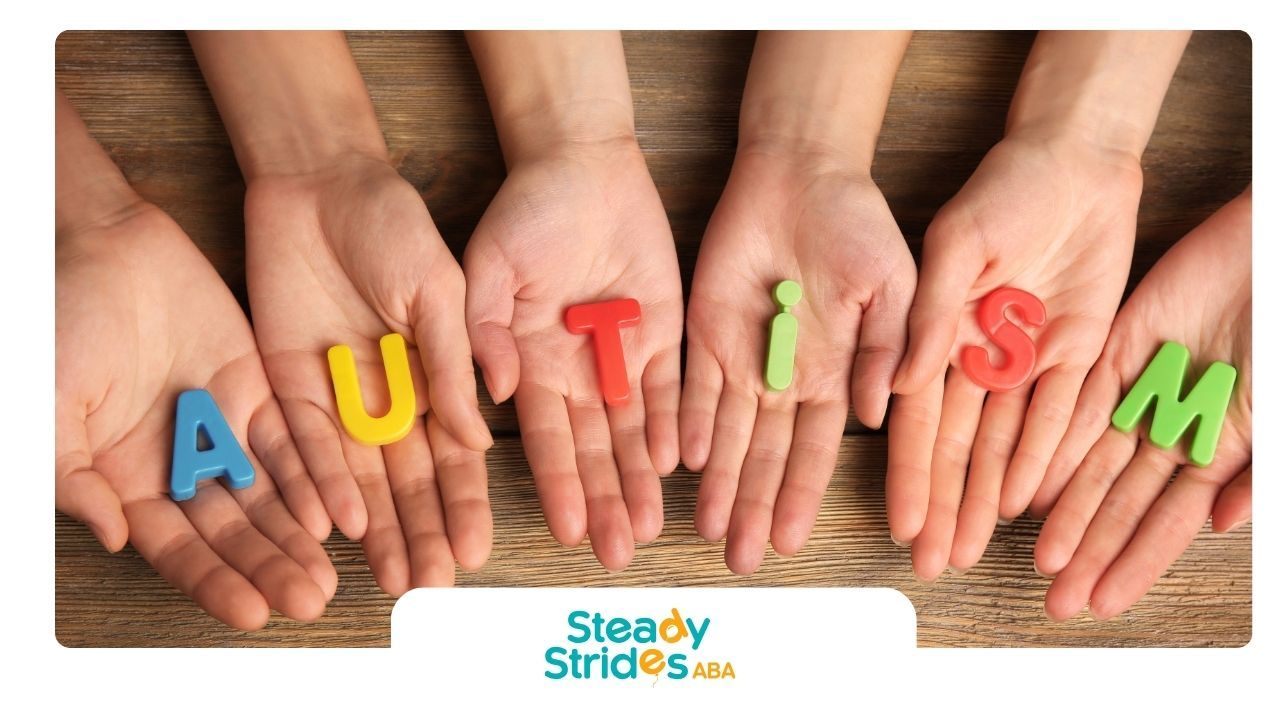Getting to Know ABA Therapy
If you're a parent thinking about ABA Therapy for your autistic child, it's good to know what you're getting into. Are there different types of ABA therapy? What are ABA therapy techniques? Let's break down what ABA Therapy is and why it matters for autism treatment.
What is ABA Therapy?
ABA Therapy stands for Applied Behavior Analysis Therapy. It's all about understanding and changing behavior using scientific methods. Think of it as a way to figure out why someone behaves a certain way and then tweak things to encourage good behavior and cut down on the bad stuff.
In plain English, ABA Therapy means watching how someone acts, figuring out what sets off those actions and what happens afterward, and then using that info to make positive changes. This approach uses a bunch of different techniques, all lumped together under the ABA Therapy umbrella.
Why ABA Therapy Matters for Autism
ABA Therapy is a big deal when it comes to treating autism. It's safe, effective, and backed by a lot of experts. One of the best things about ABA Therapy is that it's all about the individual. Every child with autism is different, with their own unique behaviors and ways of learning. ABA Therapy takes this into account, tailoring techniques to fit each child's needs.
But ABA Therapy isn't just about changing specific behaviors. It also helps kids develop communication skills, social skills, and other important life skills. This well-rounded approach can help kids with autism live more independent and satisfying lives.
Studies show that ABA Therapy can really help kids with autism, especially if you start early and stick with it. Regular assessments, consistent therapy sessions, and keeping an eye on progress are key to making the most of ABA Therapy.
In the next sections, we'll dive into the different ABA techniques and how they can be used in various settings.
What are ABA Therapy Techniques?
Are there different types of ABA therapy? Yes, a number of different types of interventions can be used as part of ABA therapy.
Each type of ABA therapy has a different way of reaching the same goal: helping kids with autism learn important skills and cut down on behaviors that get in the way. The right type for your child depends on their needs, where they are developmentally, and what behaviors need addressing.
Knowing about these different types of ABA therapy is crucial for parents and caregivers. It helps you make the best choices for your child's treatment. In the next sections, we'll break down each type of ABA therapy, giving you a full picture of this effective treatment method.
1. Discrete Trial Training (DTT)
DTT is like the ABCs of ABA therapy. It breaks down skills into bite-sized pieces with clear start and end points. Imagine teaching a kid to identify colors. The therapist shows a color, asks the kid to name it, and then gives a high-five or a treat for the right answer.
- The therapist gives clear instructions or asks questions.
- The child responds.
- The therapist gives a reward if the answer is right.
- The therapist notes down the child's response.
- This step-by-step method helps kids nail each part of a skill before moving on to the next.
2. Naturalistic Teaching Strategies
Naturalistic Teaching Strategies are more laid-back compared to DTT. This approach sneaks learning into everyday activities, making it more fun and relevant for the kid.
For instance, if a child is playing with a toy car, the therapist might use this time to teach colors, and shapes, or follow instructions. The goal is to make learning feel like play, so the child stays interested and engaged.
- Set up a learning environment that gets the child curious.
- Wait for the child to show interest in something.
- Encourage the child to respond or join in.
- Reward the child when they do.
3. Pivotal Response Treatment (PRT)
PRT zeroes in on key skills that affect a bunch of behaviors, like motivation, self-starting, responding to different cues, and managing oneself.
PRT is all about letting the child take the lead. The child picks the activities, which the therapist uses to teach pivotal skills. For example, if a child loves a particular toy, the therapist might use that toy to get the child to communicate, follow directions, or take turns.
- Find out what the child likes and pick activities based on that.
- Create chances for the child to respond or join in.
- Give prompts if needed.
- Reward both attempts and successes.
4. Early Intensive Behavioral Intervention (EIBI)
This approach may be used in young children to teach social, adaptive, communication, and functional skills. It is usually highly individualized, intensive, and comprehensive.
5. Early Start Denver Model (ESDM)
This technique is based on applied behavior analysis and is often used for children with autism between the ages of 12 and 48 months. It utilizes play activities to help foster cognitive, social, and language skills.
6. Verbal Behavior Therapy (VBT)
Verbal Behavior Therapy is grounded in Applied Behavior Analysis. The main idea here is that better verbal communication can make a huge difference in the lives of children with autism. VBT teaches kids to link words with their purposes, covering things like asking for stuff, naming things, repeating words, and having conversations.
In VBT, the therapist and child team up to work on language skills. The therapist figures out what the child needs and crafts a plan to improve specific verbal behaviors. Sessions are packed with motivational tricks to get the child to use words to express what they want. For example, if a child wants a toy, they’re encouraged to say the word for that toy.
The whole process is interactive, with the child actively participating. The therapist uses prompts and rewards to steer the child toward the right words. Over time, the goal is for the child to use these verbal skills on their own in different situations.
7. Early Start Denver Model (ESDM)
ESDM mixes ABA principles with developmental and relationship-based techniques. The main goal is to boost kids' thinking and talking skills while encouraging positive social behaviors. ESDM focuses on the core aspects of autism and uses teaching methods in a fun, play-based setting.
The ESDM approach emphasizes shared activities and active participation between the child and the adult. It’s all about integrating ABA goals into everyday routines, making learning feel like play. The focus is on social interaction and positive emotions.
In ESDM, the child’s interests are the key to making learning fun and effective. Activities are built around what the child likes, which helps keep them engaged. During sessions, the therapist and child usually sit face-to-face, encouraging social attention and communication.
The therapist breaks down complex skills into smaller, manageable steps. These steps are taught at a pace that suits the child. Techniques like modeling, prompting, and reinforcing are used to help the child learn and succeed.
ESDM is often done one-on-one with a trained therapist. However, parents and caregivers also learn ESDM techniques to use in daily routines, helping the child learn consistently throughout the day.
What are the Two Types of ABA?
ABA therapy is also often delivered in two different ways. It can be used as a comprehensive program that provides intensive intervention in many environments and situations. Or, it can be part of a more focused program that may involve only specific behaviors or situations. Here are the two teaching methods of ABA.
1. Comprehensive ABA Therapy
This approach delivers treatments that usually last for several hours each day. A therapist or behavior technician works with the individual for at least several hours each week and often in different contexts, such as in both home and school settings.
2. Focused ABA Therapy
This type of treatment may focus on helping an individual in a specific situation where they are facing difficulty. It may also focus on specific skills that an individual needs to work on. The individual often works one-on-one with a therapist, but they may also practice these skills in small groups or community settings.
These ABA techniques can make a big difference for individuals with autism. The best approach depends on the child's unique needs, and often mixing different techniques works wonders.
Making ABA Therapy Work for Your Child
Applied Behavior Analysis (ABA) therapy is all about fitting the therapy to your child's unique needs. This isn't a cookie-cutter approach; it's a personalized plan that changes as your child grows and learns.
1. Personalized Treatment Plans
ABA therapy isn't a one-size-fits-all deal. Each child gets a plan that's just for them, based on what they need and where they are developmentally. And that’s what we do at Steady Strides ABA.
The key to maximizing the effectiveness of ABA therapy lies in individualization. Every child on the autism spectrum has unique strengths, challenges, and learning styles. A
personalized treatment plan, carefully crafted by our Board Certified Behavior Analyst (BCBA), takes these individualities into account.
At Steady Strides ABA, our BCBA-supervised therapists work closely with families to understand each child's specific needs and goals. Through comprehensive assessments, we identify areas for development and create a tailored plan that focuses on:
- Building essential skills: This may include communication skills, social interaction strategies, self-care routines, or learning new behaviors that replace challenging ones.
- Addressing root causes of behaviors: We don't just address problematic behaviors, we delve deeper to understand the underlying triggers and develop strategies to address them effectively.
- Leveraging your child's strengths: The plan incorporates your child's existing skills and interests to make learning engaging and foster motivation.
These goals aren't random; they're chosen to help your child improve in social skills, communication, and behavior. The therapist considers your child's age, what they like, and what they need to work on. This way, the therapy feels more like a natural part of their life, not just another task.
2. Keeping an Eye on Progress
Once the plan is set, the therapist doesn't just sit back. They keep a close watch on how your child is doing. They collect data by observing and recording behaviors during sessions. This isn't just busywork; it's crucial for understanding what's working and what isn't.
If your child isn't hitting their goals, the therapist can see why and tweak the plan. Maybe a different teaching method is needed, or perhaps more rewards will help. On the flip side, if your child is zooming through their goals, the therapist can add new challenges to keep them moving forward.
This constant checking and adjusting makes sure the therapy stays effective. It’s like having a GPS that recalculates the route as you go, ensuring your child is always on the best path to success.
The magic of ABA therapy lies in its flexibility and focus on the individual child. By constantly adapting to your child's needs and progress, ABA therapy helps them make real, meaningful strides. It's not just about hitting milestones; it's about helping your child thrive in their everyday life.
So, if you're looking for a therapy that grows with your child and meets them where they are, ABA therapy might be the perfect fit. With a personalized plan and ongoing adjustments, your child can achieve amazing things.
3. Working with ABA Therapists
At Steady Strides ABA, we recognize that successful ABA therapy hinges on a strong partnership between therapists, families, and children. Our team of compassionate and experienced BCBA-supervised therapists is dedicated to building trusting relationships with both children and their caregivers.
Here's what you can expect when working with a Steady Strides ABA therapist:
- Collaborative Approach: We believe in open communication and collaboration. Therapists work closely with families to understand your child's unique needs, preferences, and daily routines.
- Family Training and Support: We empower families by providing ongoing training and support. This equips you with the skills and knowledge to consistently implement ABA principles at home, creating a cohesive learning environment.
- Regular Progress Reports and Communication: Therapists provide clear and regular communication on your child's progress. We hold regular meetings to discuss goals, celebrate milestones, and address any questions or concerns you may have.
This back-and-forth helps fine-tune the therapy plan, making sure it stays effective and spot-on for the child's needs.
Conclusion
ABA therapy offers a comprehensive approach to supporting children with autism. While there are various methods and techniques, the key to maximizing its effectiveness lies in personalization. Understanding your child's unique needs and strengths allows for the creation of a tailored treatment plan that fosters progress, builds essential skills, and empowers them to reach their full potential.
If you're considering ABA therapy for your child, remember you're not alone in this journey. Partnering with a qualified ABA therapy provider can make all the difference. At
Steady Strides ABA, we believe in the transformative power of personalized ABA therapy.
We partner with families throughout Texas to create customized programs that empower children with autism to reach their full potential.
Contact Steady Strides ABA today. We offer free consultations to discuss your child's needs and answer any questions you may have. Together, we can create a personalized path to success for your child.













